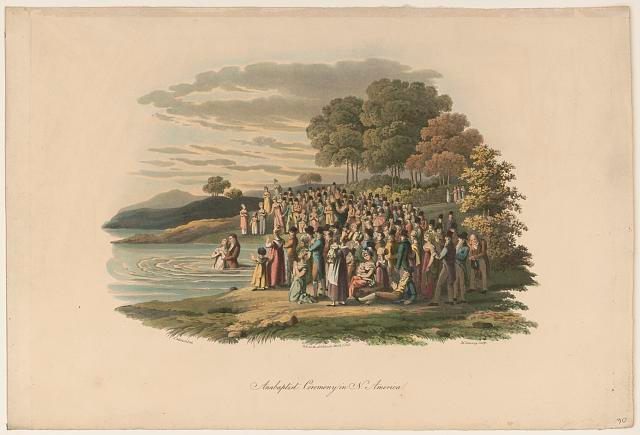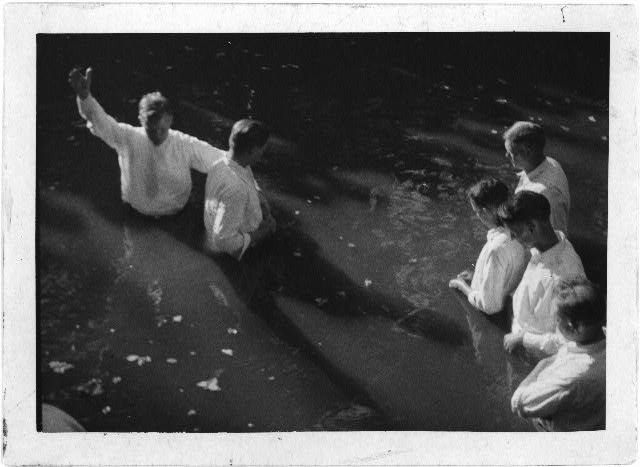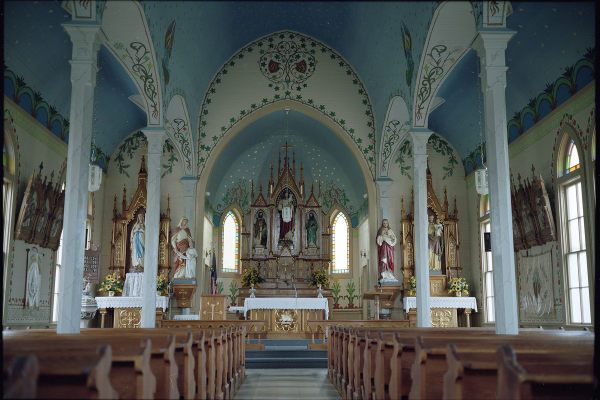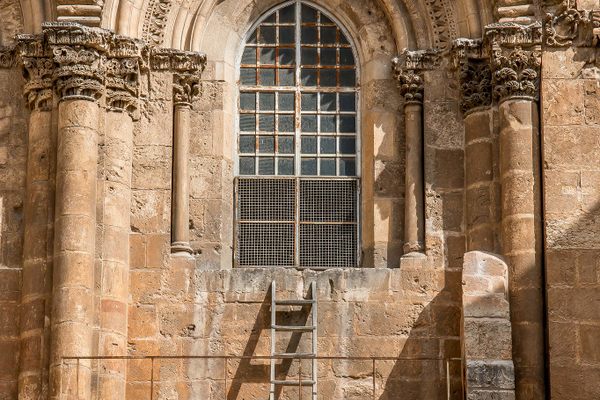Charting the Succession of the ‘True Church’ Through History
Landmark Baptists believed that an unbroken chain of Christians kept alive the true teachings of the New Testament.

In 1931, the year he died, a small book by Baptist minister James Milton Carroll was published. Titled The Trail of Blood, it traced the history of the Baptist church for 2,000 years, from the very first Christians to 20th-century America, as recapped in the chart below. This history was meant to make a particular and controversial point. In Carroll’s thinking, true churches were the ones that adhered to key “landmarks” of Christianity—ideas about church governance, baptism, and membership. Through persecution and challenge, there was an unbroken line of churches that had maintained these standards over geography and time—and this line culminated with select Baptist churches in parts of the southern United States.

“Landmarkism” started in the 1850s, when immigrants were bringing varied ideas about Christianity to America and Baptists were raising questions about religious authority. Of all these churches, competing against each other, which was the one true path to God? James Robinson Graves, the publisher of the Tennessee Baptist newspaper, along with a handful of like-minded men, began arguing that only Baptists could claim this legitimacy. They backed up their claims with arguments about “church successionism,” tracing their beliefs and practices step-by-step, back to the beginnings of Christianity.
“Baptists had been historically a people who didn’t worry about their roots,” says Alan Lefever, director of the Texas Baptist Historical Collection. “Landmarkism came at a time that some Baptists were pointing out that we had only been around since the 1600s. To the Landmarkists, that wasn’t good enough.”
Successionism wasn’t the only principle of Landmarkism. Graves and other Landmarkists advocated for stricter boundaries between Baptists and other Christians. They took their name from two passages in the Bible—“Do not remove the ancient landmark that your ancestors set up” (Proverbs 22:28), and “The wicked remove landmarks” (Job 24:2). In the Bible, these “landmarks” were physical markers that delineated property lines, but they also came to serve as a powerful metaphor. Some churches, for instance, were open to baptisms made by a minister who hadn’t had a full baptismal immersion himself. But for the Landmarkists, only Baptist rites of immersion and communion should be accepted, and pastors from other denominations shouldn’t be allowed to preach in Baptist churches.

These ideas, as one might expect, were divisive. Landmarkists’ views were more exclusive and dogmatic than what other Baptists were willing to accept. By the end of the decade, the Landmarkists had broken with the Southern Baptist Convention, a denomination first organized in 1845, and started organizing their own movement. Their ideas spread across “the Landmark belt” that stretches from western Tennessee down to Louisiana, west through Arkansas and Oklahoma to Texas, and north to Kentucky, southern Illinois, and parts of Missouri.
In The Trail of Blood, Carroll details a history of the church that traces the landmarks of legitimacy across Africa, through southern Europe, up to Wales, and into Germany, before crossing the Atlantic to America. While the Catholic Church was pursuing new doctrines of infant baptism, indulgences, and purgatory, a few persecuted Christians chose to hew closer to the teachings of the New Testament. Carroll mentions obscure groups, from the early Donatists and Paterines to the later Henricians and Waldenses, who maintained the line that led to the American South. On the chart, the red circles represent churches marked with martyr’s blood, while the darker dots represent “erring churches.” Through it all, the true Christian “landmarks” survived, Carroll believed.
Today, Landmark Baptist churches can still be found in the South and beyond. Many of them prize the independence and localism that Graves and others advocated for. The Trail of Blood, too, is still being reprinted by churches and small religious presses: Decades later, Carroll’s ideas still resonate for some.














Follow us on Twitter to get the latest on the world's hidden wonders.
Like us on Facebook to get the latest on the world's hidden wonders.
Follow us on Twitter Like us on Facebook